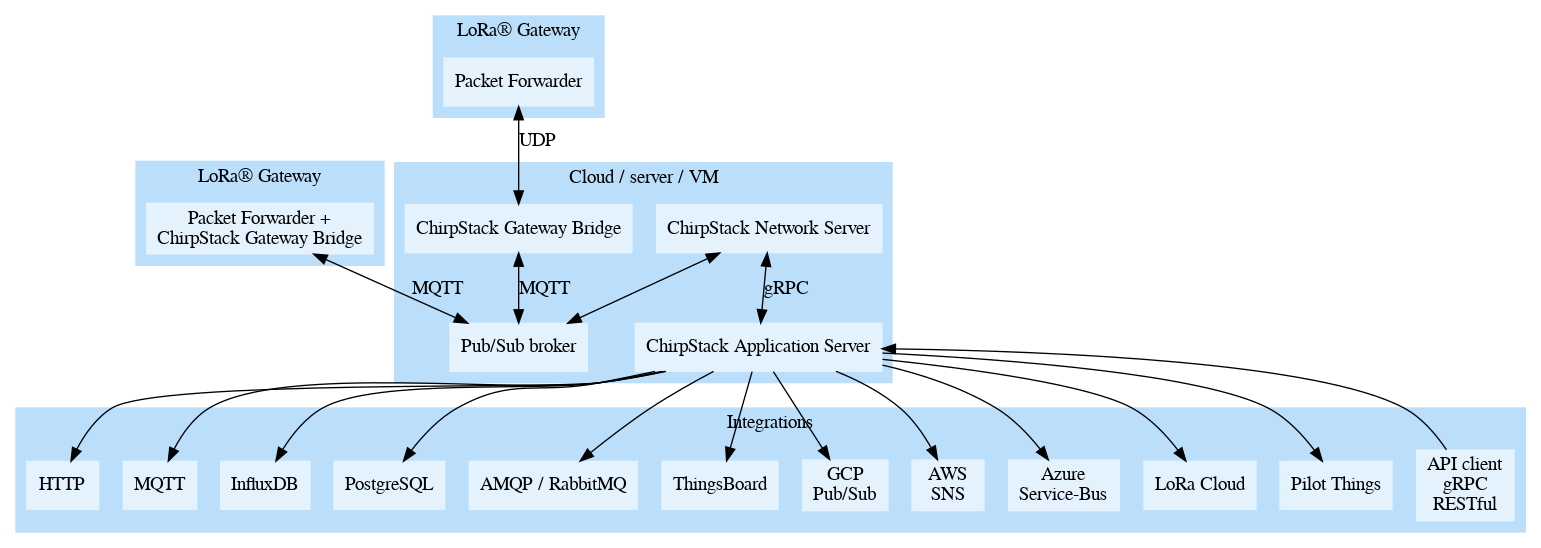LoRa
LoRaWAN
“Long Range Wide Area Network (LoRaWAN) is a low-power wireless network protocol. The LoRaWAN specification is set by the LoRa Alliance, is freely available and uses a proprietary and patented transmission method based on a chirp spread spectrum modulation technique called “LoRa” from Semtech Corporation. The LoRaWAN protocal is aimed at low power data transmission contributing to the total energy efficiency of the IoT devices and achieves ranges of more than 10 km for the uplink communication, i.e. the transmission from the IoT device to the network. The data transfer rate ranges between 292 bps (bits per second) and 50000 bps. Different operating modes up to a quasi-continuous downlink communication are possible, the latter at the expense of energy efficiency.”
(Source: based on the German LoraWAN Wikipedia article, translated to English, slightly modified).
Dragino LoRaWAN Sensor Nodes (LSE01 or LSN50 v2)
ChirpStack, open-source LoRaWAN® Network Server stack
Fig.: ChirpStack architecture. Source: https://www.chirpstack.io/project/architecture/
The Things Network (TTN)
IBM LoRaWAN in C (LMiC)
LMIC: Implementation by IBM Research Zurich
LMiC Ports to Arduino
Thank you so much, Matthijs Kooijman! 

